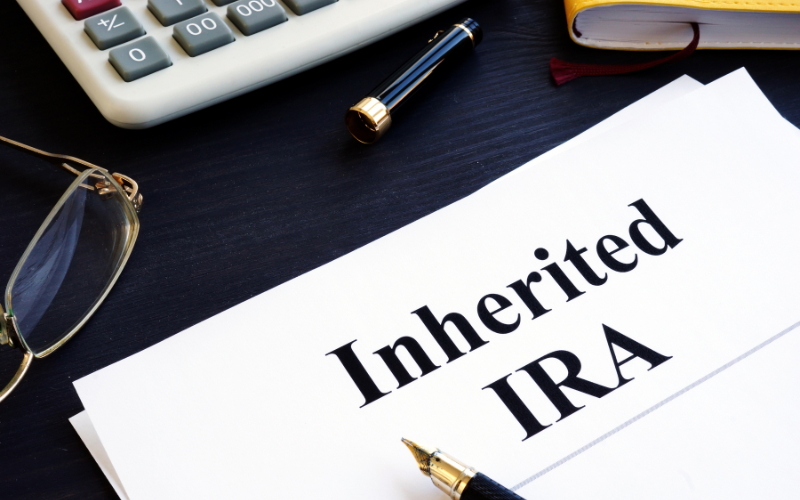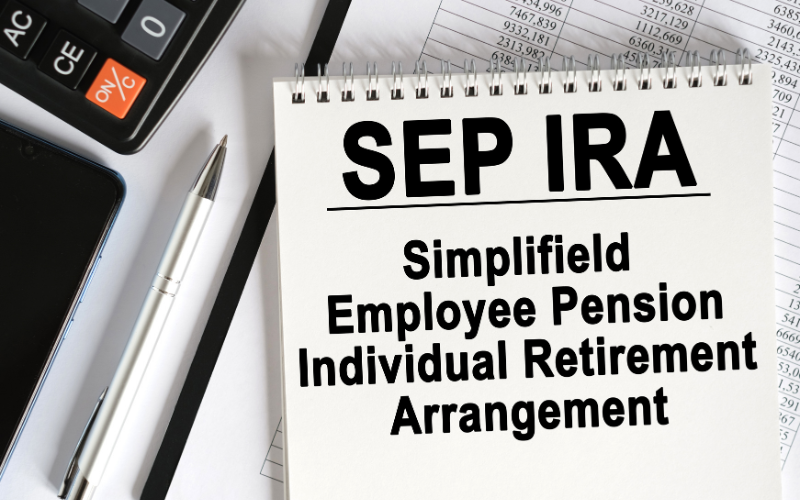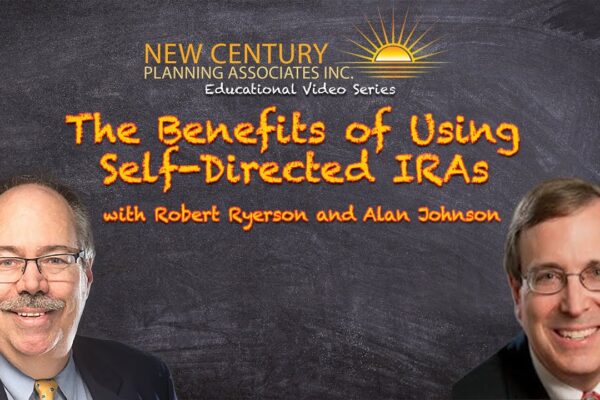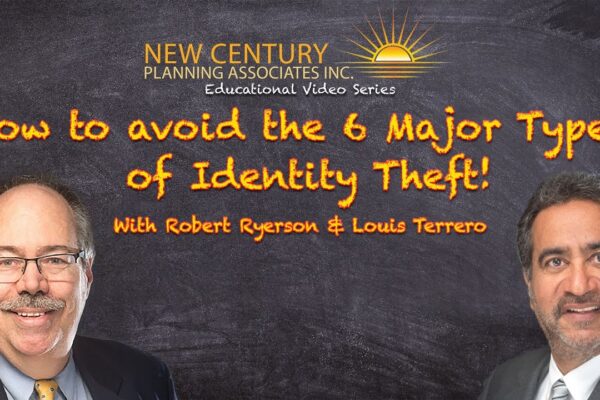6 Types of Retirement Accounts to Know About
Many people don’t start saving for retirement until it’s too late. And, a lot of the time, that’s because they don’t know the first thing about finding a good retirement plan.
To make sure you don’t fall into that trap, it’s a good idea to educate yourself on the different plans available to you. Here are six common retirement plans to be aware of.
 1.- 401(k) Plans
1.- 401(k) Plans
One of the most common accounts people use for retirement planning is a 401(k) plan.
These plans provide you with a tax-deferred way to invest your money over the decades. Your contributions to the account reduce your taxable income right now. However, you’ll have to pay taxes on withdrawals from the account when you’re retired.
401(k) plans are offered through your employer. You can automatically allocate a portion of your paycheck to your 401(k), which makes contributing to the account simple. Your employer may also match a percentage of your contributions, which is essentially free money.
Many 401k plans offer a ROTH account, or ROTH side of the plan, in which you contribute from your paycheck as usual, but the contributions do not reduce your taxable income-they go in as after-tax dollars. The big benefit to doing this is that you build a pool of tax-free money-not tax deferred-and when you eventually start your withdrawals in retirement, they are completely tax-free. If you believe taxes are going to go up in the future, this may be a wise long-term step to take.
Pros of 401(k) Plans
- Automatically contribute from your paycheck.
- High contribution limits ($20,500 per year or $27,000 per year if you’re 50+)
- You may get matching contributions from your employer.
Cons of 401(k) Plans
- Limited investment options that are dependent on your employer.
- Penalty fees if you withdraw from the account before age 59 and a half.
 2.- Traditional IRAs
2.- Traditional IRAs
Another popular type of retirement plan is an individual retirement account (IRA). Traditional IRAs are plans that are usually managed by individuals on their own, outside of their employers. Because of that, they’re good options for people who don’t receive retirement benefits at their jobs.
Traditional IRAs, like 401(k)s, have tax advantages. Your contributions are made on a pre-tax basis—meaning contributions reduce your taxable income—and the money grows tax-deferred. You pay taxes on withdrawals from the account after you retire. You may not receive any tax benefits on the contributions if you have a higher income.
Pros of Traditional IRA
- You don’t need to have an employer to open one.
- There are an endless number of choices for investments.
Cons of Traditional IRAs
- Lower contribution limits than 401(k)s ($6,000 per year or $7,000 per year if you’re 50+)
 3.- Roth IRAs
3.- Roth IRAs
Roth IRAs work a bit differently from traditional IRAs, even though they’re fairly similar. The difference here is that with Roth IRAs, you pay taxes on your contributions, but your withdrawals from the account in retirement are not taxed.
In addition, you can withdraw contributions from a Roth IRA any time without penalty, and even the earnings, as long as it has been at least five years since your first contribution. However, there will be a 10% penalty tax if you withdraw your earnings before you reach age 59 and a half. The same is not true for traditional IRAs; you’ll be taxed on the full withdrawal, and also be slapped with a 10% penalty tax if you withdraw contributions or earnings from a traditional IRA before you reach age 59 and a half.
If you think that your taxes will be higher when you retire, a Roth IRA might be a better option for you. Since you’ll pay taxes upfront, you won’t have to worry about paying them in the future.
Pros of Roth IRAs
- You don’t pay taxes on withdrawals in retirement.
- You can withdraw your contributions any time without penalty.
Cons of Roth IRAs
- You don’t get a tax break on your contributions.
- Contribution limits are low ($6,000 per year or $7,000 per year if you’re 50+)
- If your earned income is too high, you can’t contribute.
 4.- SEP IRA Plans
4.- SEP IRA Plans
Simplified Employee Pension (SEP) IRAs are ideal for business owners or individuals who are self-employed. These plans, although designed for self-employed people or small business owners, can be used by anyone.
With a SEP IRA, individuals can contribute as much as 25% of their income, or $61,000 in 2022, whichever is less, to the account. Contributions are tax-deductible. The catch: if you have any employees, you must contribute a similar proportion of their compensation to their own SEP IRA. This is why SEP IRAs tend to work best for self-employed workers, sole proprietors, or small business owners with one or two employees.
Pros of SEP IRAs
- High contribution limits—$61,000 in 2022.
- Tax-deductible contributions.
Cons of SEP IRAs
- If you have qualified employees, you must contribute an equal proportion of their compensation to their own SEP IRA.
- Like a traditional IRA, there are early withdrawal penalties if you withdraw before age 59 and a half.
 5.- SIMPLE IRA Plans
5.- SIMPLE IRA Plans
SIMPLE IRA plans aren’t simplified IRAs as the name suggests. Instead, SIMPLE stands for Savings Incentive Match Plan for Employees.
With a SIMPLE IRA, your employer has to match your contributions to the plan on a dollar-to-dollar basis, up to 3% of your salary. Alternatively, if don’t contribute to your plan, your employer still has to contribute 2% of your salary.
SIMPLE IRAs are offered through your employer; only employers with 100 or fewer employees can provide them. You can contribute up to $14,000 a year to these plans, plus an extra $3,000 a year if you’re 50 or older.
Pros of SIMPLE IRAs
- You get matched or guaranteed contributions
- They’re easy to set up.
Cons of SIMPLE IRAs
- Lower contribution limits than 401(k)s.
 6.- Solo 401(k) Plans
6.- Solo 401(k) Plans
Last but certainly not least is the solo 401(k) plan. Solo 401(k) plans are sometimes called one-participant plans. They’re ideal for individuals who are self-employed; small business owners with even one employee aren’t eligible for these plans.
Solo 401(k)s have high contribution limits: $61,000 in 2022. That limit goes up by $6,500 if you’re 50 years old or older. The fine points are somewhat complicated, but in essence, you contribute to the plan both as an employer and employee. Within that $61,000 limit, you can contribute up to 100% of your income, or $20,500, as an employee. As the employer, you can contribute another 25% of your compensation or net self-employment income.
Pros of Solo 401(k) Plans
- High contribution limits.
- There’s a traditional and Roth option so you can pick the tax advantage that works best for you.
Cons of Solo 401(k) Plans
- Limited investment options.
- Your contributions as the employer may be subject to vesting terms.
Choose the Right Retirement Plan
Now that you’ve got a bit more information on retirement plans, you’re on your way toward selecting the right one for your own needs. Consider the pros and cons of each, what’s available to you, and choose one—or more—that makes sense for your unique situation. It is best to consult a qualified retirement planning expert, such as a Retirement Income Certified Professional ( RICP), or Certified Financial Planner ( CFP).
Author
Robert Ryerson
Although Robert M. Ryerson completed all the necessary requirements to earn bachelor of arts degrees in both English and economics at Rutgers University, college policy at the time prohibited the issuance of dual degrees. As a result, he graduated from Rutgers with a single bachelor of arts in economics before finding employment as a stockbroker with Shearson Lehman American Express in New York City 1984. Robert M. Ryerson has since established himself as a respected estate administrator and legacy planner. In addition to his economics degree from Rutgers, Mr. Ryerson holds several professional designations including Retirement Income Certified Professional (RICP)®; Certified In Long Term Care (CLTC)®; Certified Financial Fiduciary (CFF)®, and Certified Identity Theft Risk Magenament Specialist (CITRMS)®. He has shared his knowledge on the subject of identity theft as the author of the book What’s The Deal With Identity Theft?: A Plain-English Look at Our Fastest Growing Crime. He has also covered identity theft issues directly for students as the instructor of the adult education course Understanding Identity Theft: Our Fastest Growing Crime.






